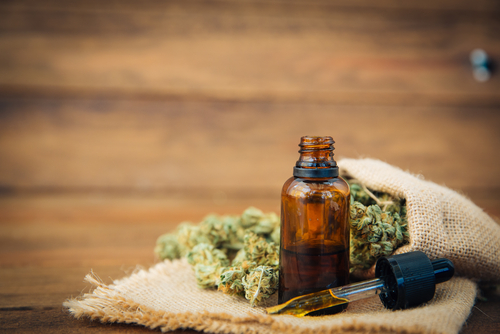Everything You Need to Know About CBD
Posted 7 years ago by Ian Shutts

As legalization of cannabis sweeps across the United States, and some Central and South American and European countries, it becomes increasingly apparent that more education is needed about all the components of the plant.
When used in medical applications, cannabinoids become regulators of internal body health as they attach themselves to the cannabinoid receptors in our body’s endocannabinoid system.
Cannabinoids come in many forms from within the cannabis plant, where there are “major” and “minor” cannabinoids that have different applications. While the psycho-active compound THC (tetrahydrocannabinol) may be the most commonly known cannabinoid, CBDs, or cannabidiols, are the part of the plant with the most widespread medical applications.
What are CBDs?
CBDs are what medical marijuana advocates are fighting for in terms of legalization and access across the globe.
CBD are non-psychoactive, therefore, users will not experience the “high” feeling usually associated with cannabis. Meaning, despite public perception, users can drive and operate heavy machinery while using CBD.
Why has there been such the confusion around CBD? Last year, on the heels of many changes in legalization towards medical and recreational cannabis in the United States, the Drug Enforcement Administration (DEA) classified CBD as a Schedule 1 drug. This caused advocates across the world to emerge in support of de-classifying CBDs and bringing greater clarity to what CBDs are and why they’re used.
Applications of CBD
As a major cannabinoid, CBD has the most widespread application in terms of medical use. Here are a few of the most understood and celebrated applications of CBD:
Pain and Inflammation
CBDs help the body interpret the pain-signalling cells in the body, lessening the effects and the “feel” of the pain to the user. In addition, CBDs contain anti-inflammatory properties that help relieve inflammation, which is the body’s natural way of protecting itself against pain. CBD-rich plants are commonly used in arthritis patients to reduce pain and inflammation.
Seizure Disorders
CBDs have been highly revered for their effects on patients who suffer from seizure disorders, spasticity, and Epilepsy. It gained ground as a popular treatment as more people found it to be completely effective in greatly reducing or even eradicating instances of seizures in those who experienced them chronically.
Anxiety & Depression
While it’s believed that high doses of THC can induce feelings of anxiety or panic attacks, CBDs on their own have the opposite effect. Users who use CBD to treat anxiety report a lessening of feelings of social anxiety or social phobia. The key when using cannabis for anxiety is to opt for a high-CBD/low-THC strain so to bring out the anti-anxiety effects.
High-CBD strains are also helpful to reduce the inflammation in the brain, which occurs during high-depressive episodes. When treated with CBD, the inflammation in the brain is reduced, lessening the experience of depression. As with anxiety, the key is to look for low-THC strains.
Anti-Tumor
CBDs are gaining very strong ground in the area of cancer treatment. While studies are still relatively new, CBDs are being used to attack tumors and in many cases, disrupting the growth, spread and metastases of tumors.
Understanding Ratios
When considering the use of CBDs for medical treatments, it’s important that the user understands strain ratios. Strain ratios describe the concentration of CBD to THC in a strain so that the user can choose their desired effect. Certain strains that are recommended for their high-CBD content include Charlotte’s Web, Harlequin, and Sour Tsunami.
How to Use CBD
While using high-CBD strain flower is an option for ingestion, smoking strains of marijuana that could have THC in it will “activate” the THC through heating. Therefore, if a user is not wanting to get high from their CBD/THC strain, smoking wouldn’t be the preferred method.
The most popular method for ingestion of CBD is to use non-inhalable CBD oil concentrates. These options involve highly technical processes of extraction to isolate the CBDs into an oil substance that can be ingested under the tongue, in pill form, in edibles, as lozenges, or can be applied topically through a salve.
The Future of CBDs as Medicine
While there is still confusion at certain levels of government regulation across the world, the increased attention of the positive benefits of CBD has created an environment of permissions that are allowing society to come around to further examine the benefits of CBD.
Undoubtedly, as more share their stories and experiences with CBD as medicine, the stigma around CBD will be lessened and it will become more embraced as nature’s most effective medicine.